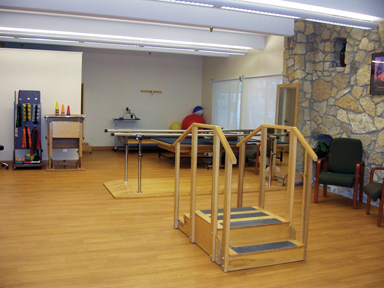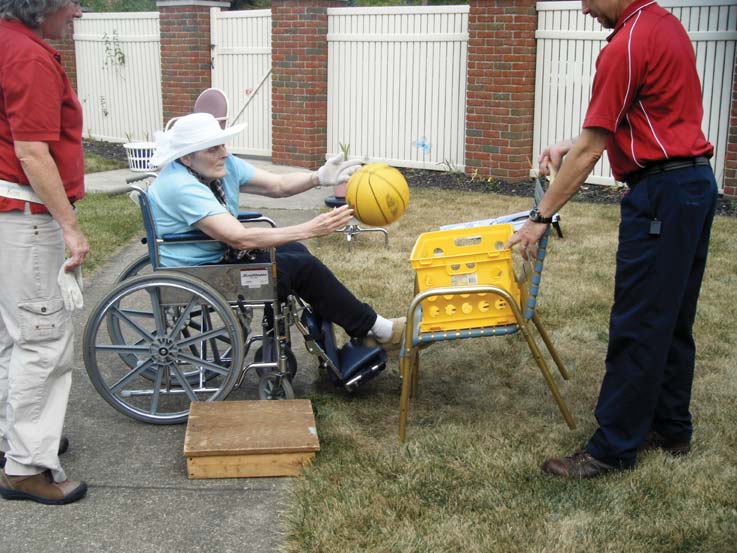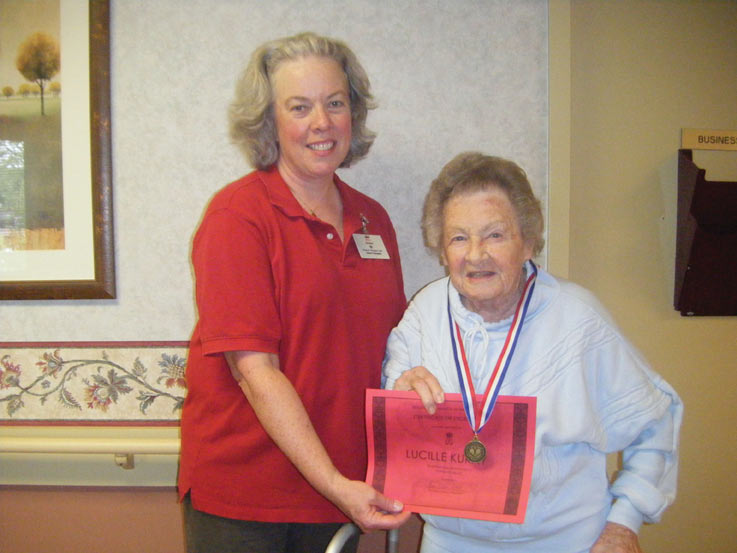 Provider's new feature, the On The Road series, which will give gives readers a snapshot of the
Provider's new feature, the On The Road series, which will give gives readers a snapshot of the
impact long term care providers and related manufacturers and vendors are having on the U.S. economy. In many regions of the country, skilled nursing and assisted living facilities have emerged as a stabilizing economic force for local economies. Even as long term care jobs become more of a mainstay, there are debates under way in state capitals and in Congress to sharply cut funding for senior programs, namely by reducing Medicaid expenditures at a time when the number of people joining the rolls grows exponentially.
The Midwestern states of Illinois, Indiana, and Ohio were the first On The Road stops. Driving across the highways and byways connecting Ohio to Illinois via Indiana, there is no debating the obvious signs of tough economic times heavy industry has recently gone through. It is all visible from a car window or a bench at a train depot, with the number of boarded-up or emptied factories speaking volumes.

In talking to long term care providers in Ohio, Indiana, and Illinois it is also obvious, but not as well-known, that area nursing facilities of all types have become a much more integral part of the local economies in which they provide care. And, importantly, a number of manufacturing centers serving the long term care sector have experienced strong growth to service such needs.
The ripple-in-the-pond effect, with nursing care at the center, offers hope for not only families in need of care for their elderly, frail, and/or rehabilitative members, but for job seekers and business owners who want to establish themselves in these states.
Nursing facilities are job creators, from the nurses on call to the vendors cutting the grass or maintaining the heating systems, to such an extent that a recent study by the American Health Care Association/National Center for Assisted Living (AHCA/NCAL) showed long term care as the 10th largest employer in the country.
Ohio SNFs Making It Work
Jason Napierala, administrator for Golden LivingCenters’ 96-bed Northcrest skilled nursing facility in Napoleon, Ohio, has seen firsthand the economic shifts in his northwestern Ohio city and its impact on the way people pay for long term care. “At one point in time it was 100 percent private pay” at the 45-year-old facility, he says. Now, the numbers show about 60 percent of residents on Medicaid, with 15 percent or so on Medicare/managed care, and roughly another 15 percent slice private pay.
“It has been horrible,” Napierala says of the economic downturn in the region. “We are very close to Detroit and took a real hit with the auto industry.”
Napoleon has just fewer than 10,000 residents and is the county seat for Henry County, positioned on the Maumee River around an hour’s drive from Toledo, which lies to the north and east. As the city has witnessed the decline in businesses tied to automakers, there has come the realization that Northcrest is a stable source of long-term employment and work for not just the 96 employees at the facility, but the scores of ancillary workers contracted out to make the nursing center a successful enterprise.
“Absolutely, we are one of the biggest employers in town now,” Napierala says, running down the list of work he provides for other businesses, from the oxygen supply company, to the local electrician, to the snow plow operators, to the landscaping crews. “We give a lot back to the community by adding another 25-30 jobs” for vendors and contract workers, he notes.
‘We Have Met The Enemy, And They Are Ours’
If you follow the Maumee’s winding path north you will run into Perrysburg, close enough to Toledo to be called a suburb of the largest city in this part of Ohio. The “we have met the enemy” quote is from the city’s namesake, Commodore Oliver Hazard Perry, who won fame following a major victory over a superior British fleet on Sept. 10, 1813, in the Battle of Lake Erie.
In Perrysburg, you will also find the Perrysburg Care and Rehabilitation Center just off Interstate 75, where Ken Zielinski is the administrator. The facility offers skilled nursing and short-term rehabilitation therapy for up to 95 patients and residents.

The care center has served the Perrysburg community since 1984 and starting in 2007 has been operated by Belmont Nursing Center Corp., an affiliate of SunBridge Healthcare. The center employs around 100 individuals in the areas of nursing, dietary, social services, activities, housekeeping, and facility maintenance, Zielinski says.
He notes his facility strives to be one of the employers of choice within the community. “With Perrysburg’s relatively small population of approximately 17,000, a loss of any one of those positions could profoundly impact a household. We all collectively benefit—our residents, the medical community that relies on us to provide follow-through care, in addition to the community as a whole—by offering positions that require specific licensing and certification such as RN, LNA, and STNA positions. The facility provides an invaluable contribution to the talent pool within Perrysburg,” Zielinski says.
To meet changing demands, around two years ago services were expanded to include an 18-bed Rehabilitation Recovery Suites unit, specifically geared for short-stay patients. The success his facility has had in providing care, and jobs, to Perrysburg would be made extremely difficult to continue if proposed cuts in Medicaid in Ohio become reality. Residents will continue to get the care they need and deserve, but the cuts would impact the business and its workers, who have become a key to the local economy.
“The proposed 5 percent reduction simply means jobs. The proposed Medicaid cut, which is scheduled to be announced next Wednesday [the time this article went to press], is a substantial loss of Medicaid revenue for my center annually,” Zielinski says.
Around 70 percent of the average nursing facility expenses are salary- related, with the other 30 percent of expenses either fixed or already reduced to the extent possible without impacting care, he says.
“Cutbacks would also prevent the center from providing the cost-of-living raises that our staff deserve. This could result in staff turnover, which could also impact consistency of care for our residents. We need our frontline caregivers and support personnel to know our residents,” Zielinski says.
“Caregivers who love what they do are often forced to take positions in other industries because the amount we can pay, based on the rates we receive from Medicaid, do not allow us to pay them a living wage. This proposed Medicaid reimbursement reduction simply makes it worse,” he says.
The recently released Eljay report for AHCA/NCAL showed that the state underpays more than $13 per patient per day for every Medicaid patient. “For us that equates to an estimated $780 per day, or $284,700 annually, based on our daily average of 60 Medicaid patients,” Zielinski says.
Nursing Care On Lake Erie
In the past year, Edgewood Manor Nursing Center in Port Clinton, Ohio, on Lake Erie, has added 10 employees, to bring its total to 74, says Lori Opfer, executive director of the Covenant Care-owned operation.

Long-term stays for employees are not uncommon here, with the director of nursing recently celebrating a 33rd anniversary. Opfer says a third of the workers have been on the job at Edgewood for more than 10 years, and just over a quarter more have at least five years’ experience. “They are really committed to the residents” she says.
A major emphasis at Edgewood is the Homeward Bound program to return residents to their homes once they receive the attention they need. Last year, 78 residents were returned home, up from 53 in 2009, Opfer says.
She has 99 licensed beds, but this year is looking to sell 20 beds because Ottawa County, where Edgewood sits, is an “overbedded county.” There are currently 82 residents, many of whom are enjoying remodeled private rooms, reflecting a national trend in nursing care to give residents solo status accommodations.
Opfer works to get elected officials in the facility, to educate them on what nursing care is all about, in the hopes that when votes come up on Medicaid and other issues, they will recall the important work being done at Edgewood.

She writes letters to her lawmakers and notes the positive responses she has received from the district’s representative in Congress, Rep. Marcy Kaptur (D-Ohio).
“The thing I would tell lawmakers is that while most of them have money, the average American cannot afford 24-hour care. If there are Medicaid cuts it would definitely make it more difficult to provide care,” she says.
Dipping Into Indiana
Well south of the northern tier of Ohio is the city of Richmond, Ind., close to the extreme eastern border of the state and an hour and change east of Indianapolis on Interstate 70.
In Richmond, CarDon and Associates operates its Arbor Trace senior living community, an 86-bed health care facility and 30 one- and two-bedroom assisted living apartments. The community opened in the spring of 2007 and was fully occupied within seven months, says Susan Bonner, CarDon director of marketing.
More than 140 people work at Arbor Trace.
The community typically operates at 40 percent Medicaid census, 35 percent Medicare, and 15 percent private pay. The assisted living apartments operate at full capacity. The community is currently undergoing an expansion to add 19 private rehabilitation suites and expanding the therapy gym, she notes.
The expectation, given the current economic climate, is that further cuts to Medicaid reimbursement are coming, says Jeff Huffman, director of external affairs and ancillary operations for CarDon.
“These reductions will not affect our continued efforts to offer the highest quality of care to our residents, no matter what the reimbursement type. These cuts will have to be absorbed in the bottom line and will lead to the freezing of wages and benefits and less expenditure on improving physical plants and equipment,” he says.
CarDon sees many of its 13 communities as one of the largest employers in a given area, making the continued education of lawmakers extremely important. “As for-profit organizations, it’s also important for elected officials to understand the amount of tax revenue generated by long term care in our state,” Huffman adds.
Medline’s Manufacturing Growth
It makes sense that with all the economic activity being generated at long term care facilities across the Midwest and the nation as a whole, there would be demand for the manufactured products essential to senior care. A leader in doing just that for the long term care industry, and hospital and health care sectors in general, is Medline.
Based in Mundelein, Ill., an hour’s drive north of Chicago, Medline is bringing its customers cost-saving solutions in a market under immense pressure to be as efficient as possible.

At some point when you get near Medline headquarters, the water tower bearing the company’s name comes into view. The water tower; the train tracks that run right into the manufacturing facility for supplying round-the-clock operations; and large machines pumping out any number of gloves, textiles, incontinence products, suction tubing catheters, and medicine cups, among its scores of offerings, attest to a bustling business.
With more than 2,250 workers at the Mundelein facility and around 7,500 for the company as a whole, there is abundant activity in meeting customer needs, says Medline Chief Operating Officer Jim Abrams, part of the family-run executive team in charge of the privately held company. Cousins Andy Mills and Charlie Mills are president and chief executive officer, respectively.
Abrams says Medline is focused on improving outcomes for patients and residents in the health care system and makes every effort to integrate the concerns and ideas of clinicians and providers who see daily how best to use the company’s products to prevent falls, eliminate infections, and cut down on all sorts of deficiencies.
Medline is active in any number of programs, both training efforts inside its buildings and in the grassroots arena at the state and federal levels, with ties to associations and allied groups, in order to improve the caregiver’s capabilities at every level. For example, Medline helps organize and conduct seminars with state associations on the Quality Indicator Survey. Its Compass programs are practical, hands-on resources to help clinicians meet standards of practice, improve care outcomes, and reduce regulatory risk.
Medline is seeking to bring value to customers, and in turn, help to reduce costs throughout the health care system. The new health care reform law will make it even more imperative that value, not just volume, be apparent in care models and reimbursement, Abrams says. “We’re seeing how we can help reduce readmission rates, working with nursing homes and all ends of the spectrum,” Abrams says.
He is concerned that the nursing industry, dominated by family-run businesses, is in danger of having its “muscle, not fat” cut by further reductions.
For Medline, Abrams emphazises that keeping costs low and striving for efficiencies is a way of life, and as the nursing care business evolves, its ability to grow jobs depends on it.
Rep. Robert Dold (R-Ill.) represents the 10th district in Illinois, adjacent to Mundelein. He sees long term care as a vital issue for Congress to address now and into the future. “Long term care is very important as we look at an aging population, with seniors living longer,” he says. The challenge is balancing the obvious need to care for seniors with budgeting pressures. “There is no question the amount of spending by the federal government is unsustainable,” Dold says, stressing the need for public-private partnerships to stretch dollars as far as possible.